[Wanderlust Tips March 2018] Majestic and wild waterfalls, vast green coffee gardens, lovable and sincere smiles are our unforgettable experiences on the journey to Southern Laos.
[rpi]
SUNSET IN PAKSE
From Hue, I took an early morning long – distance bus passing through Lao Bao border checkpoint, then travelled to Pakse town instead of stopping in Savannakhet as planned. The bus was packed with lots of household goods and food from Vietnamese traders. All the time, the bus was filled with laughter and Hue accent, sometimes there were children crying. Travelling on a sleeper bus without any air-conditioner and all windows opened, we had to suffer the intense heat of Central Vietnam.Arriving at Pakse just at mid-night, fortunately, I could still call a tuk-tuk to my hostel when I was completely exhausted and hungry. The hostel is located near the Consulate General of Vietnam.
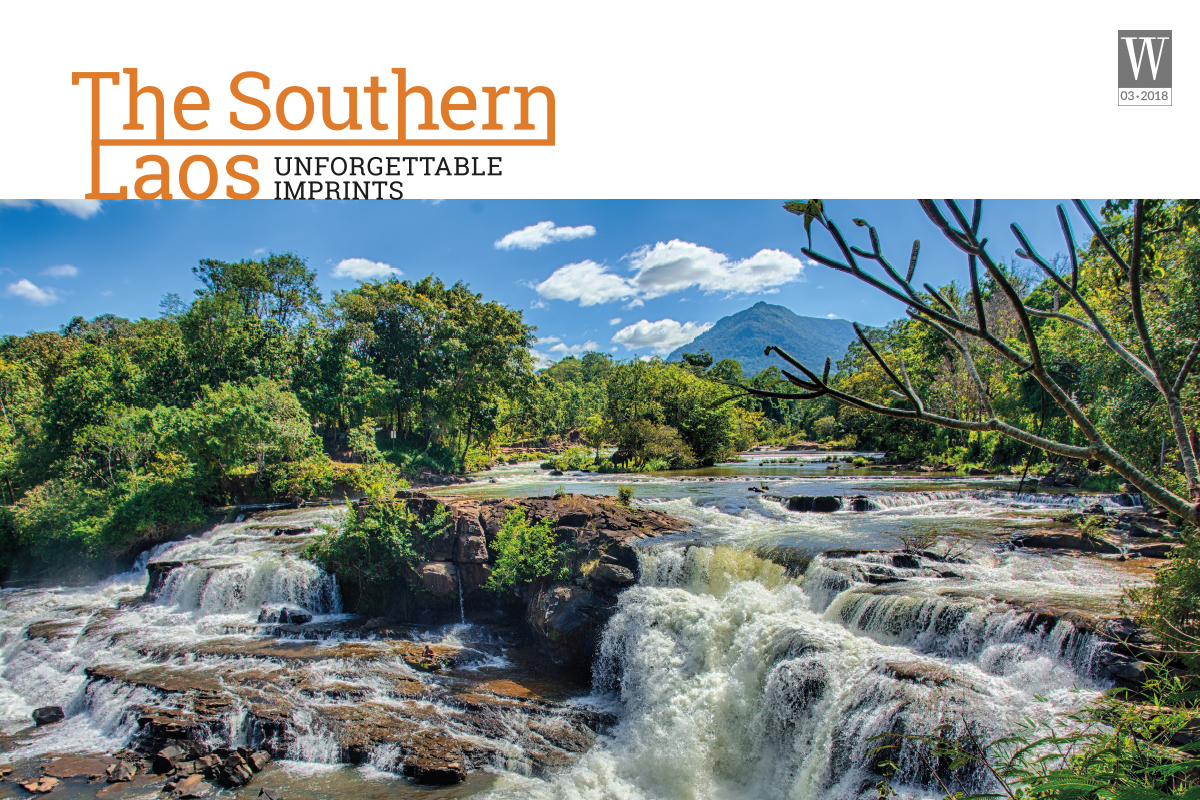
After checking-in, I walked to a grocery store to buy instant noodles. Suddenly I heard a young couple speaking in a familiar language in front of the store. After a minute, I realized they were teasing each other in Vietnamese. The darkskinned 20-year-old girl wearing shorts jumped to the back seat of her boyfriend’s motorbike. Her mother who was the store owner hastened and shouted behind the motorbike: “Back home early!” I laughed, thinking I was still in my country.
I stayed in Pakse for a day, wandering around quiet streets with low-roof houses featuring colonial French architecture and visiting a magnificent golden curved-roof pagoda. In the courtyard of the pagoda, small towers containing ashes of the dead were aligned and illuminated. Porcelain flowers blossomed with sweet incense, creating a holy atmosphere to the temple by the river. In contrast with the peacefulness here, Dao Huong market in the heart of the town is very busy. This is the largest market in Pakse, built by a successful overseas Vietnamese businessman living in Laos.
The market is quite spacious with all kinds of products, and most of the retail traders here are Vietnamese. Wandering around, you will see it is just like Ben Thanh market. Female traders have their conversations in Vietnamese, display their goods, and invite guests enthusiastically. I bought some cakes to prepare for the Bolaven Plateau tour on a motorcycle the next day.In Pakse, do not forget to enjoy the grilled fish caught from streams along the Mekong River. Fresh fish is caught in the Mekong River in the early morning, then salted and grilled on hot charcoal. Crispy fish skin and hot soft white flesh slices are wrapped with vegetables and rice paper, served with Laos beer featuring rich flavors. All of these made it so easy for us to indulge in the violet color of the sunset. It seems to be a specialty of the town that used to be the capital of the Champasak kingdom.
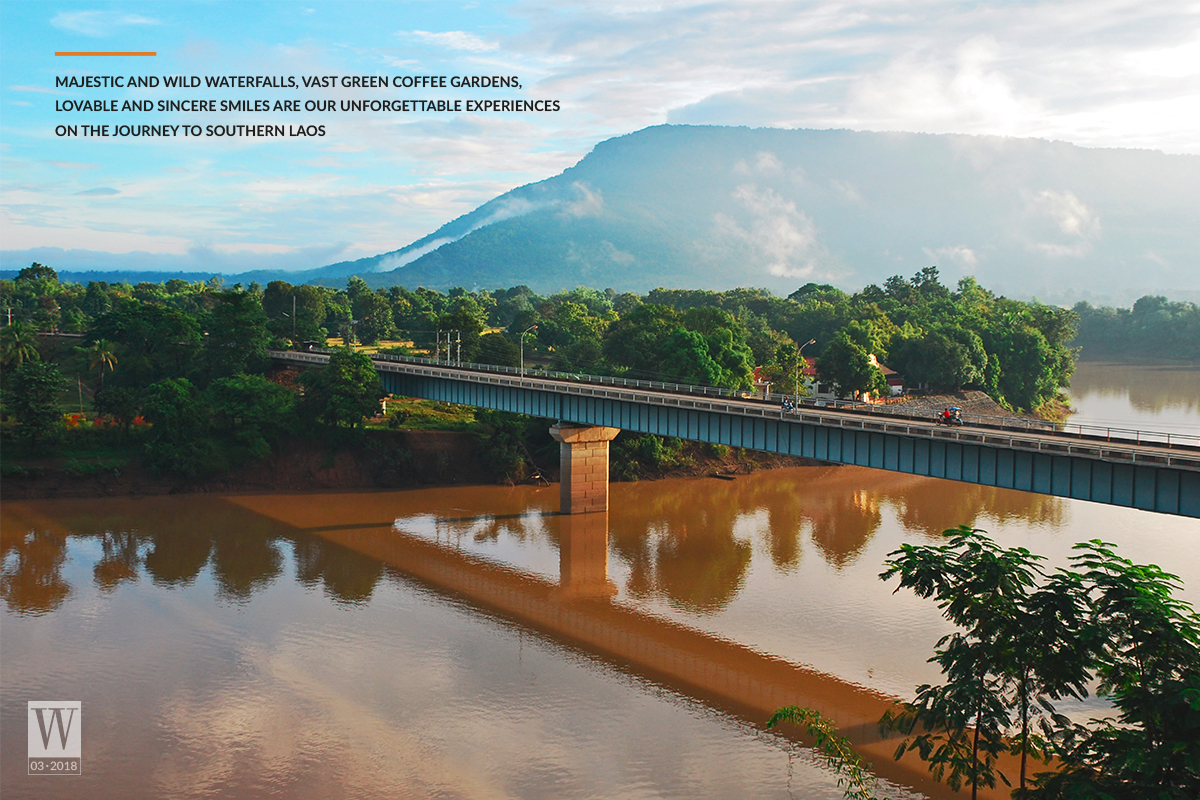
THE ROCKET FESTIVAL IN NAXONE
The next morning, I and my French friend, Julie met at the motel and went to a motorcycle rental shop on the central road of Pakse to ask for the route to the Bolaven Plateau. The shopkeeper is a 30-year-old French man, married to a Lao woman and has lived here for many years. He gave us a map showing the route to Bolaven by motorbikes and detailed guidelines.
The Bolaven Plateau is located in the northwest of Laos, in Champasak province. This land is relatively flat; its basalt soil is more fertile than in Dak Lak while the cool climate is similar to that of Da Lat. Due to its favorable conditions, Bolaven is also home to the famous Arabica coffee in Laos.
In addition, Bolaven also attracts tourists from all over the world to explore and conquer the majestic waterfalls formed by river branches flowing through the plateau, creating picturesque natural landscapes.
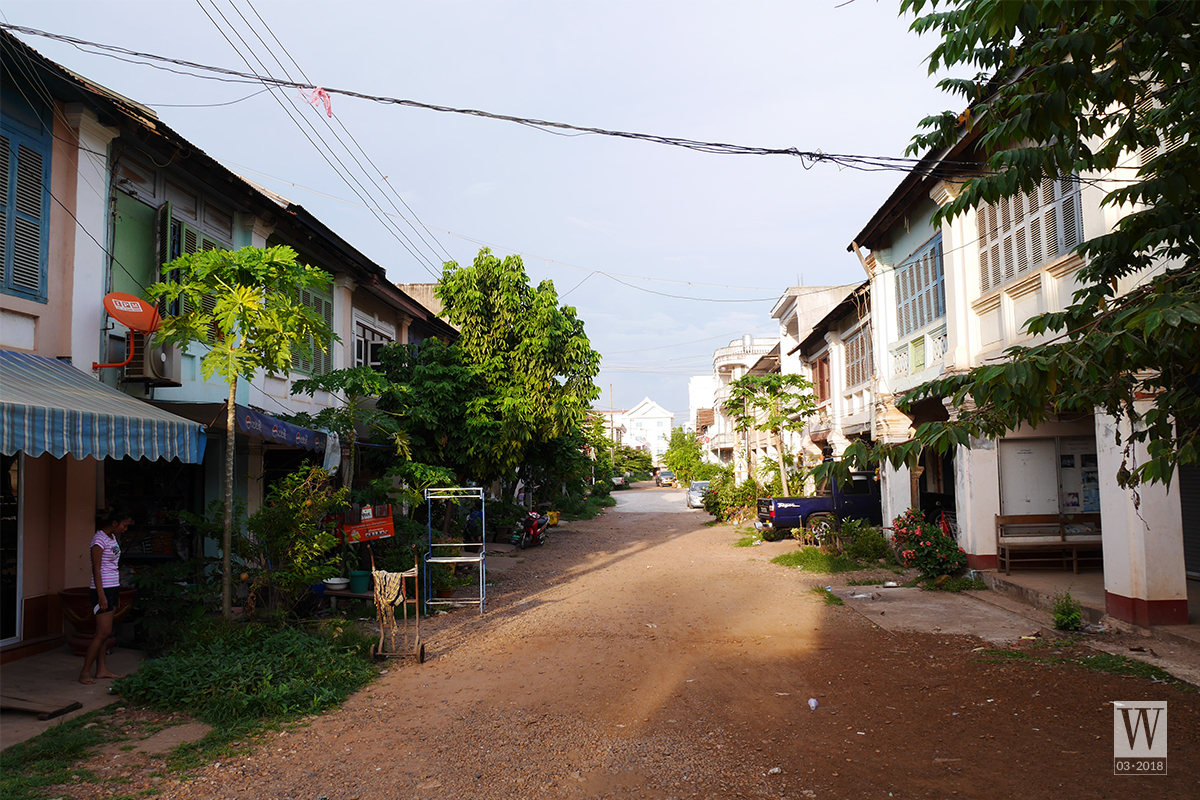
Due to the narrow winding roads, the most convenient means of transportation for exploring is the motorbike. There are two types of vehicles for rent: Thai Wave and Scooter – a popular vehicle in Southeast Asia for those who are not familiar with Thai Wave. We rented a Wave for 50,000Kips per day, with a duration of 5 days to explore 4-5 waterfalls.
However, the previous morning, when we visited Pakse tourist information center by the river, a young female staff invited us to visit her village to participate in the Rocket Festival held once every three years. “It will be fun!” She winked at me. So before travelling to Bolaven, we decided to go in the opposite direction to Naxone, which is 20 kilometres away from Pakse.
Traditionally, the Rocket Festival is held at the end of the dry season. Rockets, made by villagers, in all sizes will be shot in the sky to pray for good weather and abundant harvest. Villagers celebrate the festival for three days with many bustling performances and dances from morning to night.
On the first day, people set up teams for dancing and singing competitions. On the second day, every house will prepare a tray of delicious food, those who pass by, whether they are acquaintances or strangers, are all invited to the house to enjoy the meal.
We arrived on the third day, also the last day and the most bustling day of this unique festival. All villagers went to the field together to plow the ground preparing for the new season. The young gathered with colorful homemade rockets tied to the top of a bamboo pole, they competed to see whose rocket makes the biggest bang and flies furthest. The sky was filled with dark gray smoke lines. The whole vast field became extremely “dangerous” as rockets exploded all over the place, startling us. Ladies fully make-upped grouped together drinking traditional rice wine from early morning. Everyone was drunk; they laughed, sang and danced wildly. We stood nearby and were invited to dance with the locals.
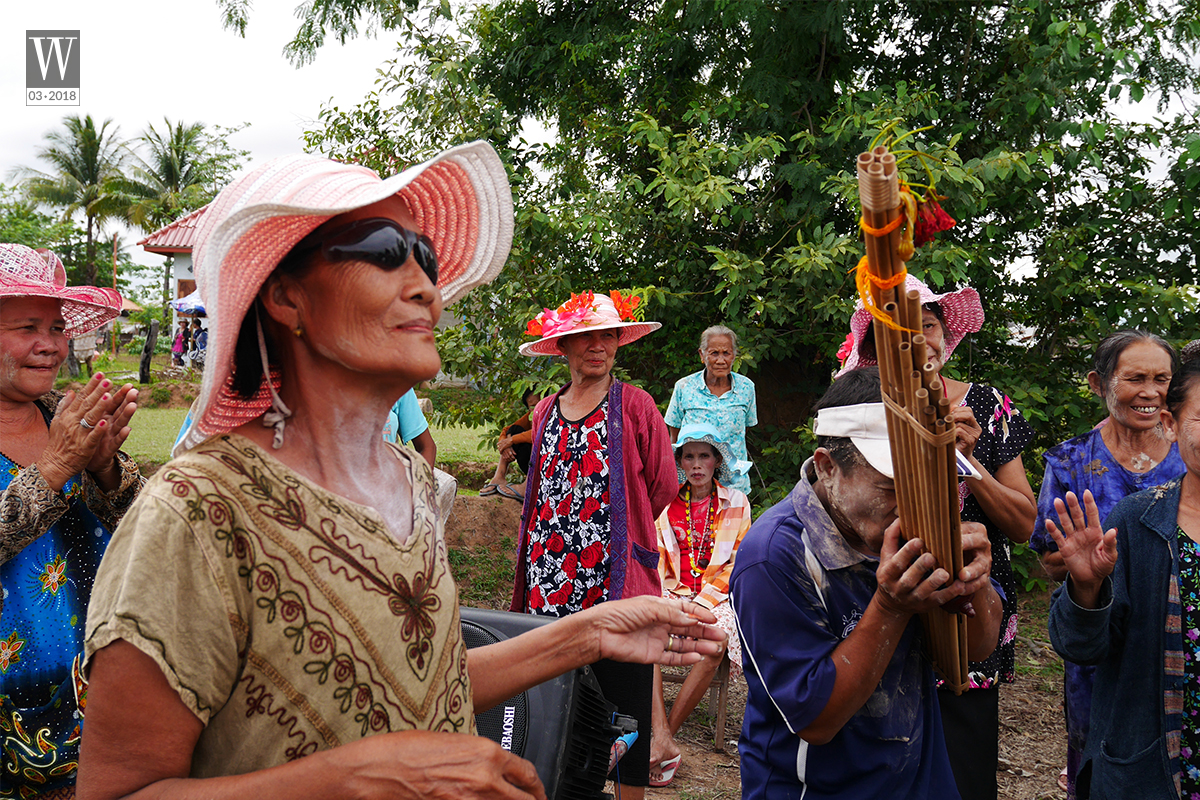
Some women kept holding my hand and smiled, with their faces as red as beetroot. There was a middleaged woman who could not even stand because she was so drunk, but still held the half-full bottle of rice wine and smiled happily. Only her eyes were bleary as if she was getting lost in another dimension.
On the last day of the festival, besides the rockets shooting, it is the mud bath ritual. Villagers will prepare a clean muddy area in the middle of the field so that children or adults can slip into it, cover themselves in the mud and beat drums cheerfully. A 50-year-old man approached and asked me where I came from in English; when I answered him in Vietnamese, he was surprised and greeted me in a special Quang Tri accent. He had come here with his family when he was young, earned a living in farming.
On this occasion, the whole village would relax for 3 days for the celebration. I asked whether the villagers had to work for 3 years to take one break. He laughed and said that, in fact, Lao people had many festivals, and they would take any chance to enjoy their lives.
Before leaving Naxone, I met the staff working at the tourist centre the day before. She invited me to eat vermicelli with spicy sauce and the famous traditional meatball of Laos. The flavour of chili peppers was so spicy but I still felt really happy and lucky at that time. I did not know if I would have the opportunity to participate in such an interesting festival like this again.
Leaving Naxone while still drunk because I could not refuse the glass of rice wine from a Vietnamese man, we went to Pakse, heading toward the Bolaven Plateau.
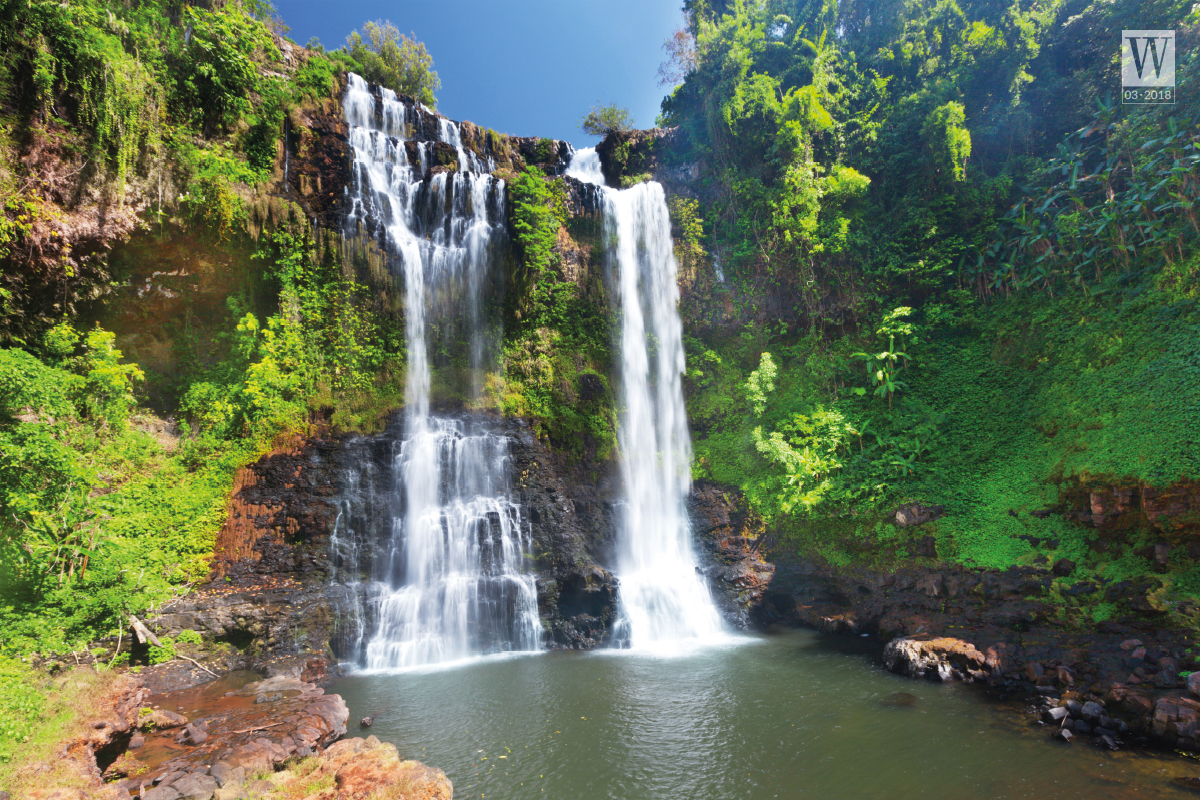
THE HARMONIOUS LIFEON BOLAVEN PLATEAU
The 5-day expedition to ethnic villages alongside the majestic waterfalls of Southern Laos is an exciting and memorable experience. Besides its pristine beauty, we felt deeply impressed by the warm and sincere hearts of local people, as well as the bright and shiny black eyes of Lao children.
In Lao, Tad means waterfall. The Bolaven Plateau is home to many of the natural and most pristine waterfalls in Laos, which are also among the nicest in the Land of a Million Elephants. In the 3-day trip, we travelled through Tad Pampasak, Tad Lo, Tad Yuang, Tad Champee and Tad Fane. Each waterfall has its own unique feature, but they all have one thing in common: they have not been exploited by the tourism industry, so the scenery is still untouched. The route through Bolaven was beautiful, winding around the vast fields of corn, rolling hills and mountains. Sometimes the roads leading to the waterfalls were too narrow and rough to follow due to mud, but that could not stop us because the more difficult it was, the stronger our enthusiasm became.
From Tad Pamsasak to Tad Lo, we stopped at a homestay in the village of Katu ethnic group. The children gathered at the gate of the village to play soccer, their faces were sunburned, their arms and legs were smudgy. However, their eyes and smiles were so bright when welcoming visitors. The homestay owner is a 60-year old woman called Me living with her daughter. Katu homestay is a large stilt house nestled amidst the lush coffee garden.
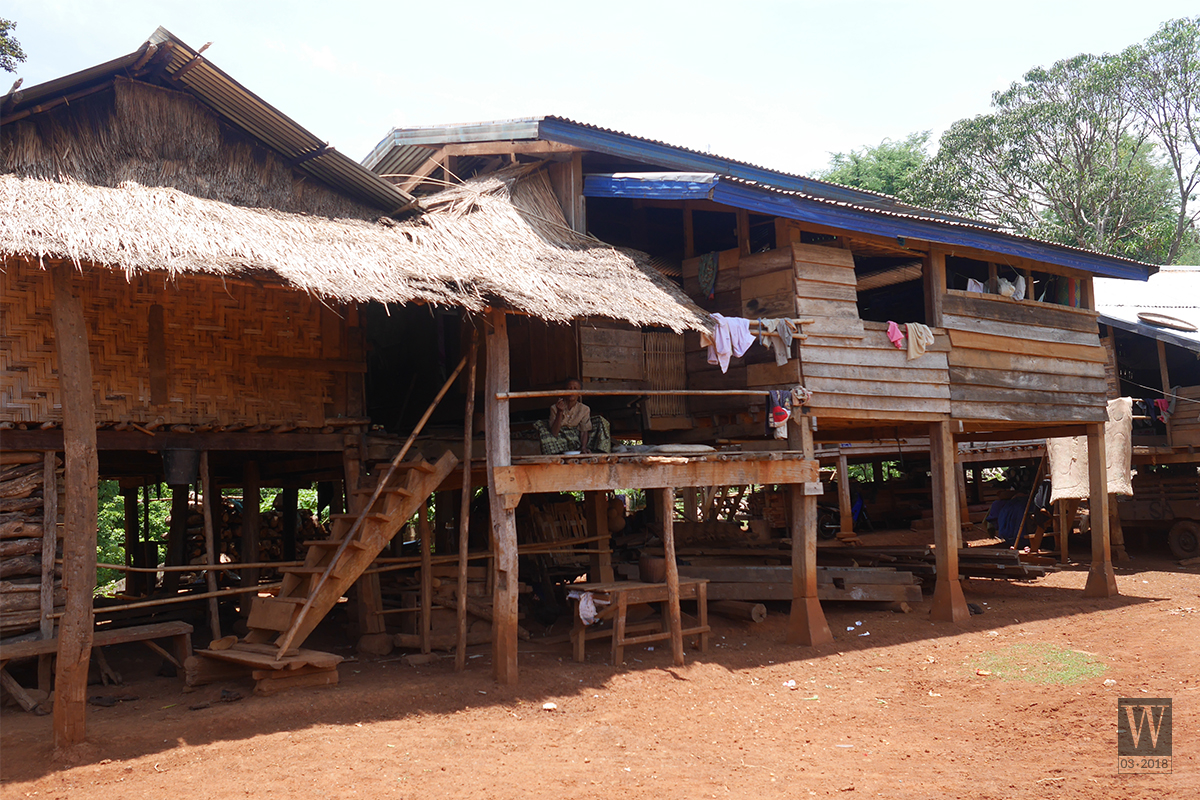
The courtyard was filled with baskets of dried Arabica coffee beans. The aroma of roasted brewed coffee in the cold atmosphere has brought us comfort and relaxation. I followed Me into the house to see how she prepared the coffee and was surprised to see large wooden shelves displaying all kinds of Italian coffee pots and machines. I did not think there was such a special café in this remote area. She smiled while looking at my astonished face, I still remembered her black teeth chewing betel and the wrinkles around her eyes. The coffee was light brown and left an amazing sweet flavour in the throat. The coffee here was so delicious, and I could not stop myself from taking the second glass though I would lose sleep that night.
After saying goodbye to Me and the stilt house filled with the aromatic coffee, we continued to drive our motorbike to Tad Lo, one of the most famous waterfalls in Bolaven.
Next to Tad Lo waterfall is a small village with quiet and idyllic stilt houses in somewhat lacking conditions. Besides wandering, visiting the forest and waterfalls, and listening to the sound of water flowing night and day, we had nothing much to do in Tad Lo. The monotony of this place makes people feel lazy, want to relax, and somehow want to stay longer. There were actually many people who decided to stay here after a short visit. There was a beautiful Spanish girl; after a backpacking trip to visit this land 4 years ago, she fell in love with a village man and decided to stay and open a bar.They have lived happily together until now.We also fell in love with the simple and romantic atmosphere here, and after staying for 2 days, we felt really sad when leaving.
During this trip, I also met many fellow countrymen: the hostess named Mai living near Tad Lo waterfall; Thao Trang, the restaurant owner born in Hue who lived with a two-year-old eagle in Paksong town; Ms.Lien selling Pho at the entrance of the market; and Mr. Chieu, the owner of coffee gardens in Paksong. All of them were very enthusiastic when I asked for directions and willing to tell me all kinds of stories. Mr. Chieu said that there were a lot of Vietnamese people who come here to do business, but they were very happy when meeting Vietnamese tourists.
There are a number of beautiful and quiet resorts around the waterfalls, with the rooms built in separate areas where visitors can hear the sound of water flowing all day and night. You can also walk to the waterfall which is just a few steps away from the room. The price is affordable, about USD15 per night, which is ideal for those who love to stay in nature.
We chose the homestay of a young couple with a daughter aged 4-5 years old. It is a simple stilt house with only one bamboo bed and a set of blanket and mattress, shared bathroom with no hot water, and the price was about VND20,000 per night. The host was very kind and enthusiastic; the meals were always filled with laughters. In the morning, I liked to wake up early when the sun had just risen, go to the balcony, smell the smoke in the kitchen with odor scent, watch the husband trying to start the tractor, his wife hanging the clothes while the children were playing in the yard. Also, the herd of swines and chickens running around. It was such a peaceful and happy life, which made me feel homesick.
W. TIPS:
VEHICLES: Vietnamese do not need to apply for a visa to Laos. From Vietnam to Laos, you can travel by plane or train. From Hanoi and Ho Chi Minh City, you can buy Vietnam Airline and LaoAirline’s tickets to Luang Prabang and Vientiane, then drive to Pakse. From Hue, you can buy a sleeper bus ticket directly to Pakse, passing Lao Bao border checkpoint; this journey will take about 10 hours.
CURRENCY: Laos’s currency is three times as much as Vietnam’s, so you may feel prices in Laos to be more expensive. You should exchange money in Vietnam before travelling to Laos, the fee for withdrawing money at an ATM is quite high. In Pakse, there are branches of Vietinbank.
CLIMATE: The climate in Laos is similar to Vietnam’s; the southern Laos’ climate is similar to that in Central Vietnam with the summer being extremely hot. Remember to bring sunscreen, lotion, and mosquito repellent. When you go to Bolaven, remember to bring your windbreaker to prepare for the cold at night.
DOMESTIC TRANSPORTATION:In Laos, there are fewer motorbikes, and people drive really carelessly, so you should be careful if you travel by motorcycle. Prepare necessary medical supplies. In Pakse, the cheapest and most convenient vehicle to get around is a motorbike and you will have to fill up the gas tank. You can rent a motorbike to visit Wat Phou Temple, a Khmer temple relic in Southern Laos. Wat Phou is located at the foot of Phu Cao Mountain, Champasak Province, 6 kilometres from the Mekong river, 50 kilometres from Pakse, and 670 kilometres to the south of Vientiane. This place will remind you of the Angkor Wat in Cambodia; however, the area of Wat Phou is smaller.
ACCOMMODATION: In Pakse, there are many cheap hotels, but it is rare to find one equipped with air conditioners, so you should consult the information carefully before booking. The 3-star Champasak Palace Hotel is right by the river and has a nice buffet. On the Bolaven Plateau, you do not have to book in advance; there are a lot of resorts and homestays here. In the ethnic villages near the waterfalls, there are many homestays featuring stilt houses; they are not really well-equipped but relatively clean and cheap. You will have the experience of staying with local families.
SOUVENIRS: Typical souvenirs in Southern Laos are mainly made of brocade such as bags, purses, and keychains.
Quynh Huong | Wanderlust Tips

